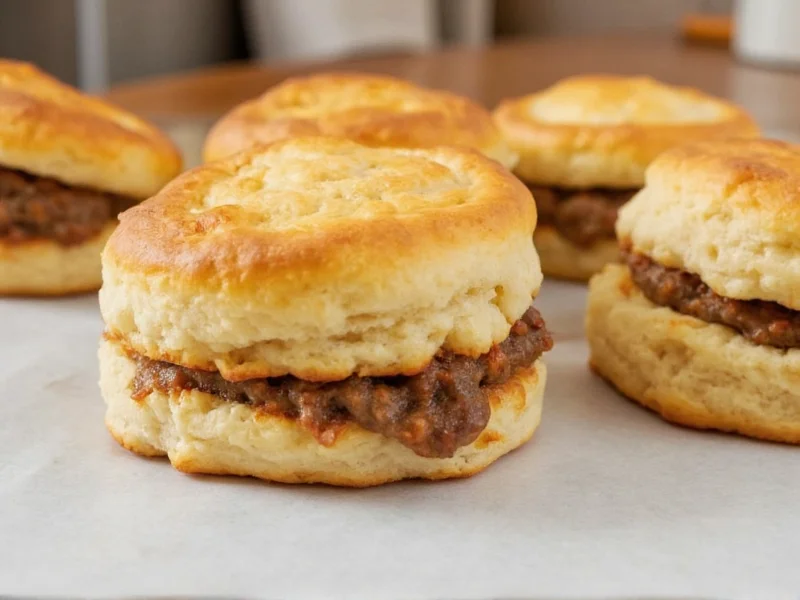The Origins of Sausage Biscuits
Sausage biscuits emerged from Southern American culinary traditions where biscuits served as versatile handheld carriers for hearty ingredients. The combination gained nationwide popularity through fast-food breakfast menus in the 1970s, though home cooks had been preparing similar sandwiches for generations. Traditional buttermilk biscuits provide the ideal vessel due to their tender crumb structure and subtle tang that balances the rich sausage.
Essential Ingredients Breakdown
Creating exceptional sausage biscuits requires attention to both components. For the biscuits, use cake flour instead of all-purpose for more tender results, and keep butter or shortening thoroughly chilled. Buttermilk's acidity reacts with baking powder to create lift while adding flavor complexity. When selecting sausage, choose fresh pork sausage with 20-25% fat content for optimal juiciness - avoid pre-cooked varieties which become dry when reheated.
| Component | Temperature | Time | Doneness Indicator |
|---|---|---|---|
| Sausage patties | 350°F skillet | 4-5 minutes per side | 160°F internal temp, no pink |
| Biscuit dough | 425°F oven | 12-15 minutes | Golden brown, 200°F internal |
| Assembled sandwich | --- | 2-3 minutes | Heated through, cheese melted |
Step-by-Step Preparation Guide
For homemade sausage biscuits that rival professional results, follow these precise steps. First, prepare biscuit dough by cutting 1 cup cold cubed butter into 2½ cups flour until pea-sized crumbs form. Mix in 1 tablespoon baking powder, 1 teaspoon salt, and 1 cup cold buttermilk just until combined. Roll to ¼-inch thickness, cut circles, and bake at 425°F for 12-15 minutes. Meanwhile, form 4 oz pork sausage portions into ¼-inch patties, cooking until reaching 160°F internal temperature. Split warm biscuits, add sausage, and serve immediately for optimal texture.
Regional Variations Worth Trying
Southern sausage biscuits often feature cayenne-spiced sausage and extra-flaky biscuits made with lard. Midwestern versions sometimes include cheese directly in the biscuit dough. In Texas, you'll find jalapeño-infused sausage patties, while coastal regions occasionally incorporate seafood sausage alternatives. For a healthier approach, try turkey sausage with added fennel and sage, though traditional pork sausage delivers superior flavor complexity for authentic sausage biscuit experience.
Pro Tips for Perfect Results
Professional bakers emphasize three critical factors for flawless sausage biscuits: maintaining ingredient temperatures below 40°F until baking, avoiding overworking biscuit dough (which develops gluten and creates toughness), and assembling sandwiches while both components remain hot. Freeze uncooked biscuit rounds on a tray before transferring to bags for convenient homemade sausage biscuits whenever desired. When reheating leftovers, use a toaster oven instead of microwave to preserve texture - the latter makes biscuits rubbery while the former restores crispness.
Storage and Reheating Guidelines
Store assembled sausage biscuits in airtight containers for up to 3 days in the refrigerator. For longer storage, freeze components separately: wrap biscuits in plastic then foil, and freeze sausage patties between parchment sheets. Reheat biscuits at 350°F for 8-10 minutes until internal temperature reaches 190°F, while sausage patties need just 3-4 minutes. Never microwave sausage biscuits if you want to maintain proper texture - the rapid moisture release destroys the delicate biscuit structure.











 浙公网安备
33010002000092号
浙公网安备
33010002000092号 浙B2-20120091-4
浙B2-20120091-4